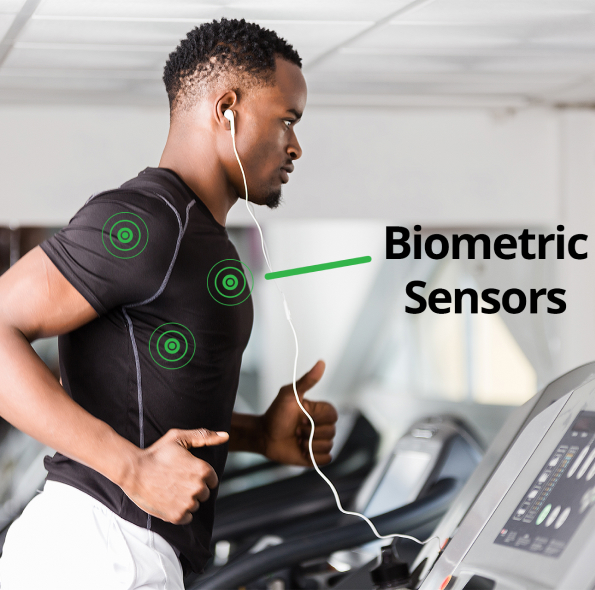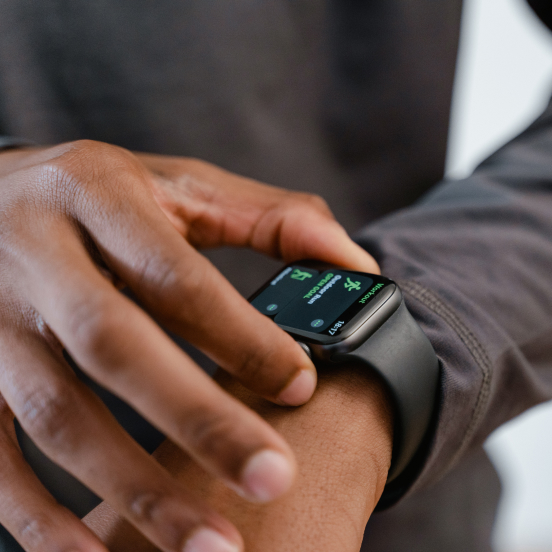Aid in Recovery and Injury Prevention with Biometric Sensors
A biometric sensor is a device that can track biometric data given off by the body. Much like an electrode, a biometric sensor can send or receive electrical signals when it comes into contact with the skin.
Butler Technologies produces slim and stretchable biometric sensors and circuits that can move with the body using innovative screen printing technology and cutting-edge conductive inks. With a thin, flexible profile similar to other screen-printed graphics, biometric sensors can be nearly invisible to the end user while still providing the same quality of data as a traditional wire sensor.
These printed biometric sensors can send as well as receive electrical signals and can handle the necessary loads to provide electrical stimulation to muscles and nerves. Whether you want to target muscle recovery through EMS or relieve nerve pain through TENS, our printed electrodes can keep up.

Measuring biometrics or attending physical therapy using traditional sensors in healthcare settings is anything but comfortable or convenient.
Standard biometric sensors use a plethora of wires to collect data and send it to a device, making them heavy and bulky. To attach electrodes to the body, healthcare workers need to use electrode gel.
Screen-printed sensors and electrode arrays eliminate the feel of stiff wires and the weight that makes them uncomfortable.
With no wires or messy gels, printed biometric sensors can detect health problems, assist in diagnosing disorders, make physical therapy possible from home, aid in drug-free pain relief or treating chronic conditions, and more.
Coverlay: TPU or printed encapsulate. Reliefs for electrodes and terminations.
Carbon Overprint: An added layer of wear resistance. Optional for some constructions.
Electrode: The electrode can be made using silver, silver chloride, carbon, or a proprietary ink blend.
Conductor: The conductor is made using silver or carbon traces.
Carbon Underprint: Added to reduce moisture transfer through TPU. Optional for some constructions.
Base Film: Typically a flexible and stretchable TPU film with hot-melt adhesive.
Fabric: The fabric layer is optional. Adding a fabric layer is ideal for non- permanent applications.










Electrical Muscle Stimulation (EMS) - (Elicitation of Muscle Contraction using Electric Impulses - Recovery / Athletic Recovery)
Transcutaneous Electrical Nerve Stimulation (TENS) (Pain relief by targeting sensory nerves. Therapy using Low Voltage Electrical Current to Provide Pain Relief - Pain Relief)
Neuromuscular Electrical Stimulation (NMES) - (Physical therapy / recovery by targeting
motor nerves.)
Neuromodulation - (Stimulate nerves involved with specific condition to relieve symptoms)
With all the different customization options and use cases, it might seem overwhelming.
Contact our expert team today and take the pressure off yourself.